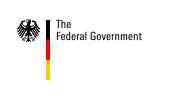Berlin is the place where reunification happened. People in both the East and West of the city had been separated from each other for over 40 years. It was even more remarkable how quickly they managed to come together again after all that time.
Berlin mastered the huge task of reuniting the two halves of city: The infrastructure was comprehensively modernised – including telecommunications, local transport and roads. Whole districts were rebuilt, others were renovated and all appear more attractive today than ever before.
First class culture and science
Operas and theatres, and the numerous scientific institutions in the east of the city were evaluated and modernised. Opera houses, theatres and the Museumsinsel (Museum Island), the Humboldt University and the Adlershof "City of Science, Technology, and Media”, the Campus Berlin Buch and the university medical centre Charité: These are beacons that shine out beyond Berlin's borders.
Capital - in many respects
 Photo: REGIERUNGonline/Fassbender
Photo: REGIERUNGonline/Fassbender
Berlin is the capital – and not just in a political sense. Berlin is given its lively appearance through the unique combination of its historical past and future, tradition and renewal, renowned high culture and trendy scene.
Countless people are drawn to Berlin: young creative minds looking to realise their dreams that make Berlin a stronghold of music, fashion and design.
The last 15 years have also seen tens of thousands of people from central and eastern Europe stream into the city. They not only enrich the city's cultural diversity but also help create links between Berlin and its eastern neighbours. The EU has expanded since 1 May 2004 but Berlin was already a step ahead in this process of expansion.
Berlin was a symbol of a world divided by the Cold War. Berlin later became a workshop of unity. Berlin is now a city where Europe meets. With the EU expansion to the east our city has moved from its place on the edge of western Europe to the centre of the European Union. Germans from west and east, but also existing and new EU citizens feel at home in Berlin.
Berlin is a young, lively city and has changed dramatically in the last 15 years.
And if you walk through the new districts with their friendly and modern government and parliament buildings with the Reichstag at its centre, and if you visit squares such as Pariser Platz, Potsdamer Platz and Leipziger Platz that were neglected and lifeless in the days of the Wall then you can see: A small miracle has happened here. And this miracle arouses interest in people worldwide.
